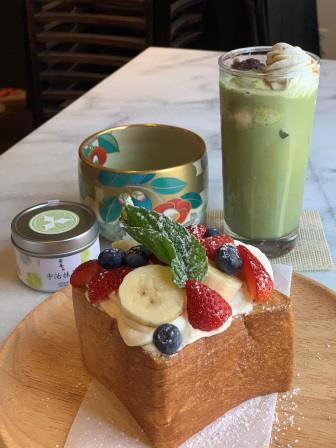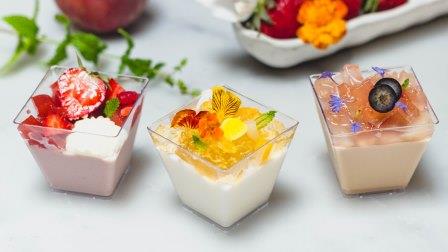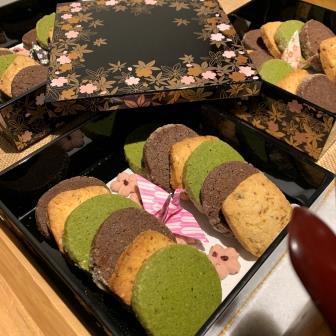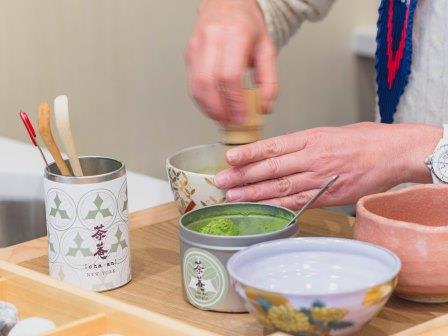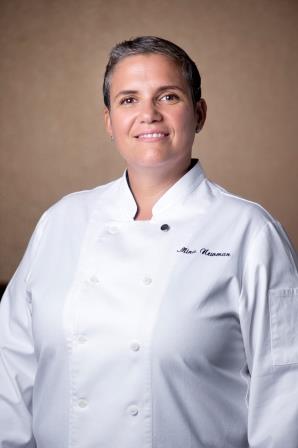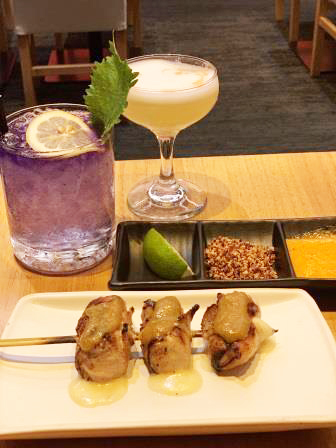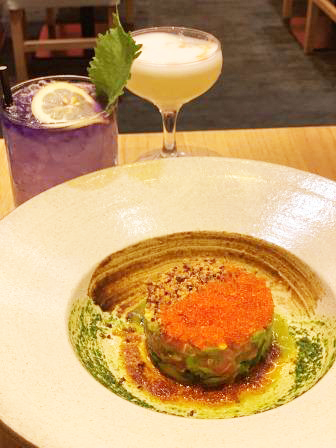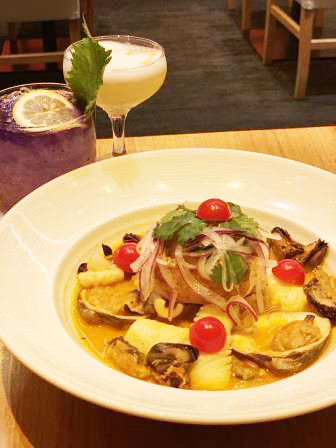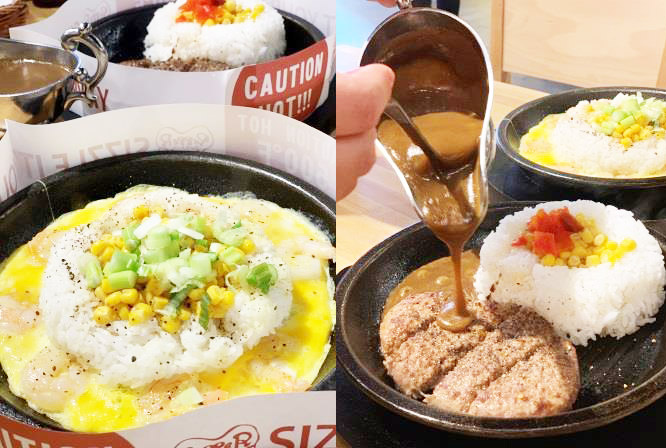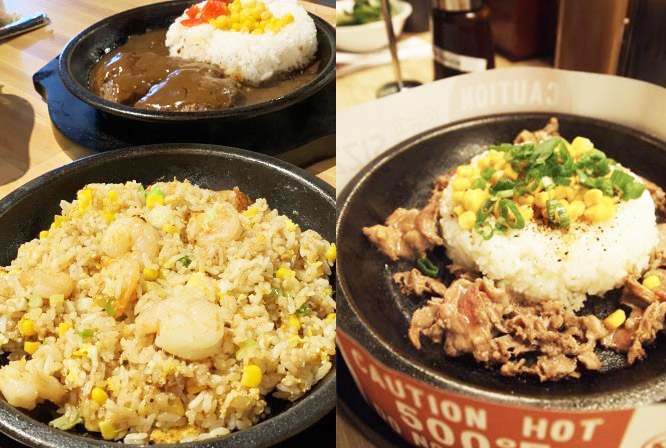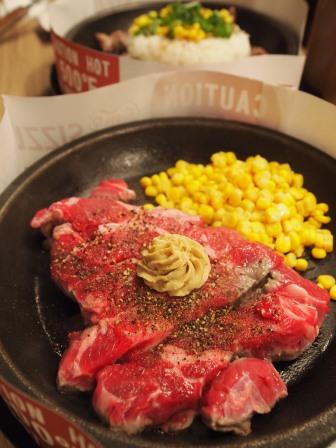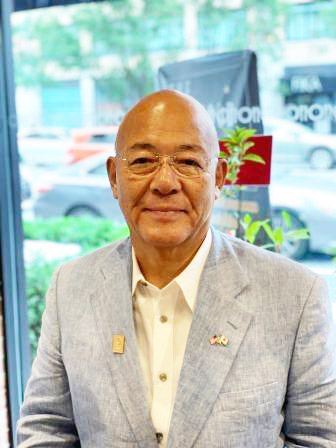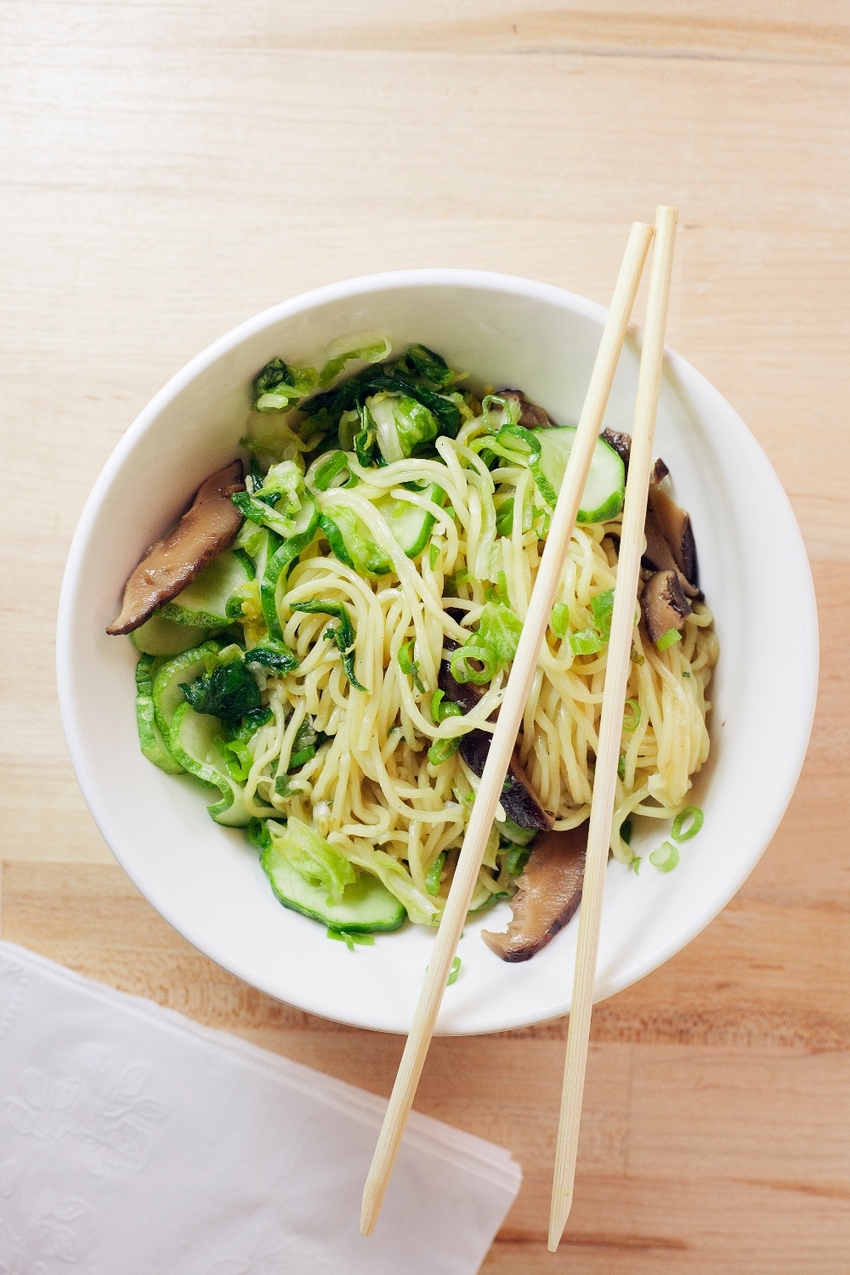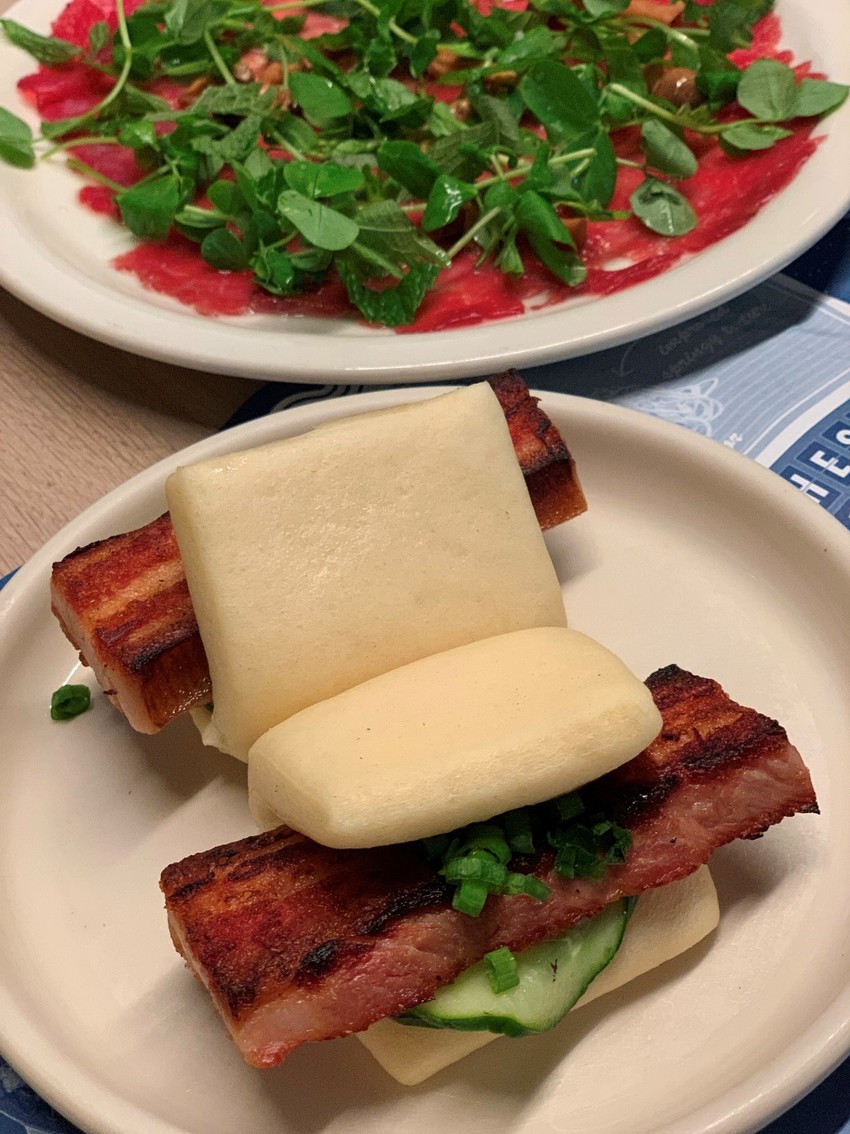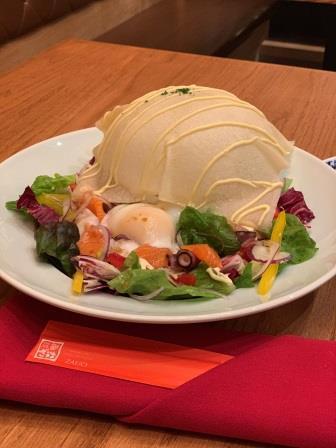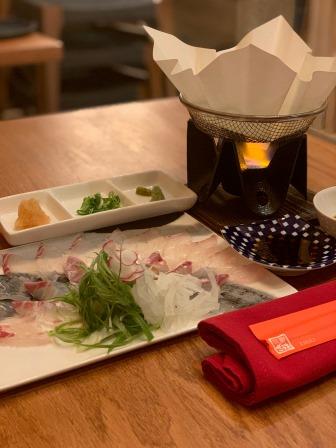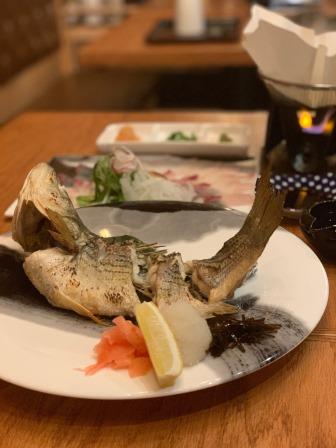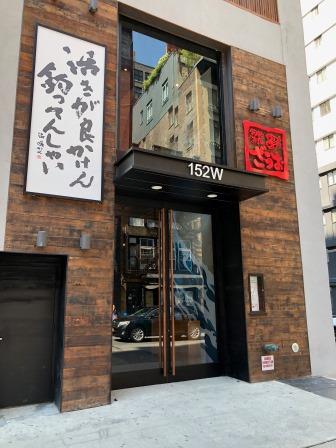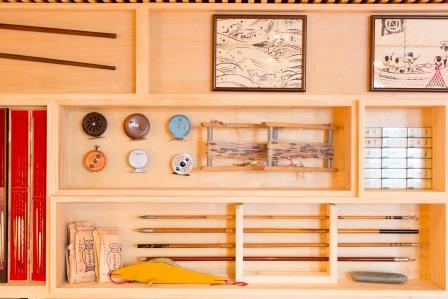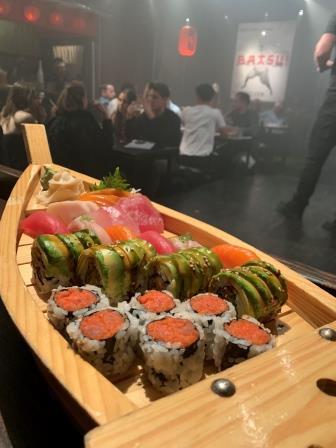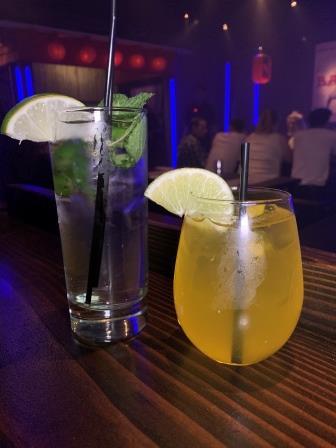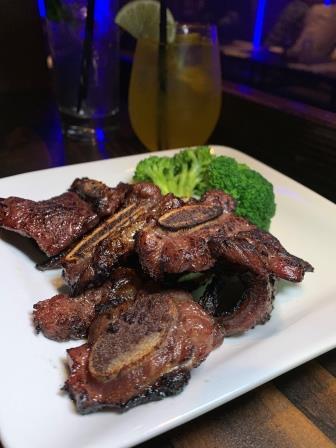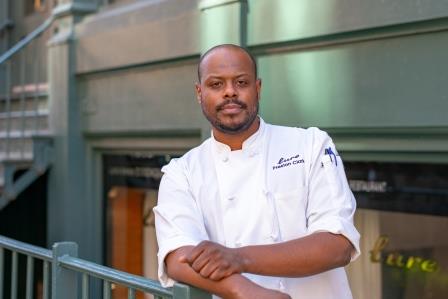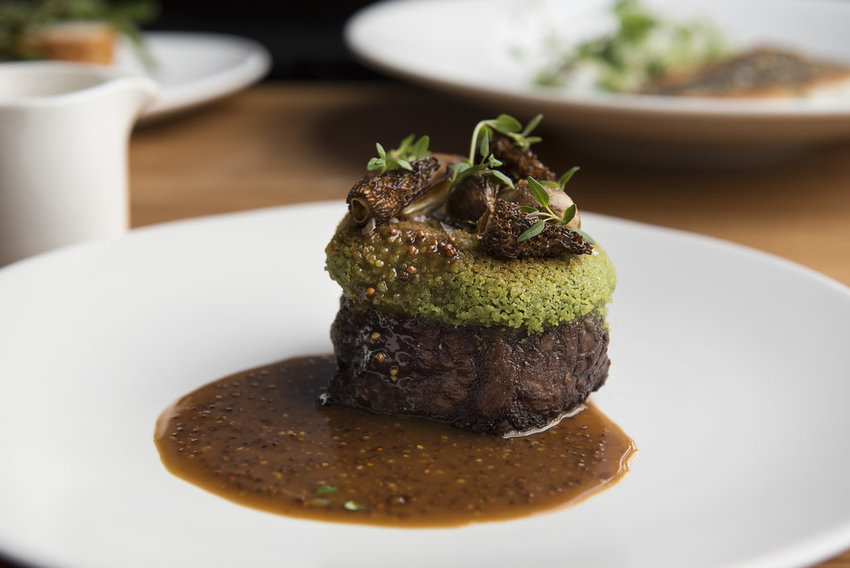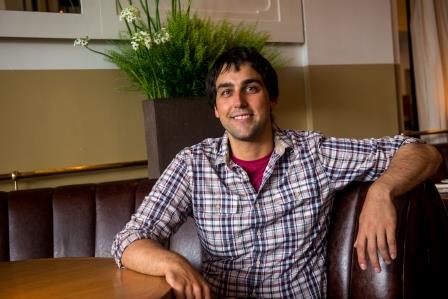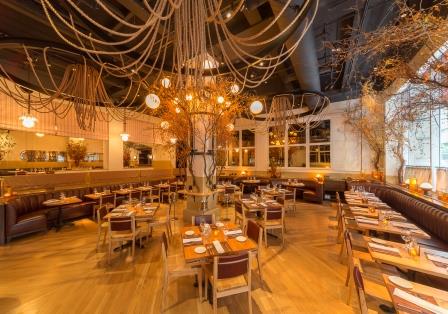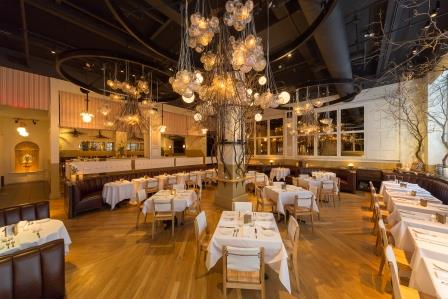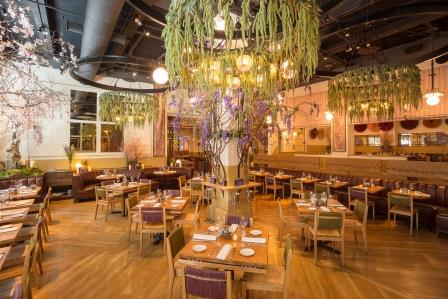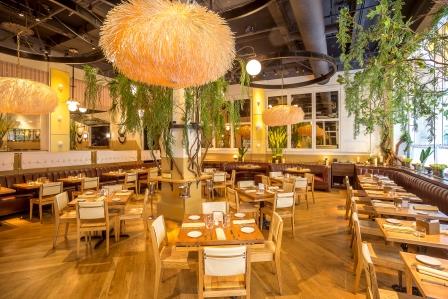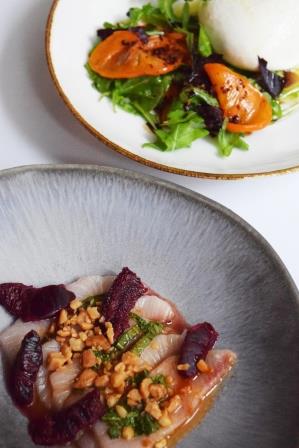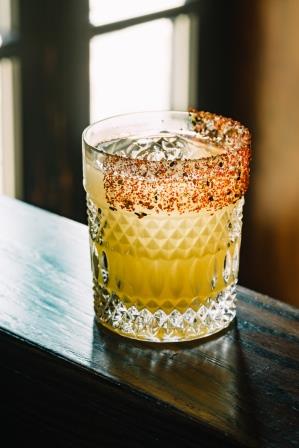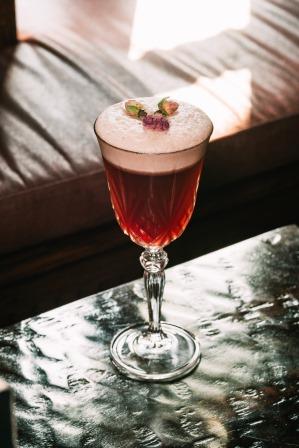Carefree take-out outpost of authentic Japanese sweets and matcha drinks “Cha-An BONBON”
By Aya Ota
“I wonder, since when did Americans start to enjoy Japanese sweets this much?” ---You cannot help but feel such astonishment when you look at the store-front of Cha-An BONBON, where many customers crowd around. Cha-An BONBON opened on May 1 of this year as a place where you can take out the popular matcha drinks, Japanese sweets, Hojicha softcream, which is still new and rare in New York, etc., and are offered at Cha-An Teahouse.
“Cha-An Teahouse” opened in 2004, which is 15 years ago. It is one of the T.I.C. Group establishments that runs 18 various style Japanese restaurants in New York. The concept of “Cha-An” is “the tea”, and it offers a wide variety of teas such as black tea and Chinese tea besides Japanese tea and matcha. When it opened, it had equipped with an authentic ceremonious tea room.
Their menu includes traditional Japanese sweets such as “anmitsu” and “zenzai”, western style sweets accentuated by Japanese ingredients such as “Matcha Pudding” and “Black Sesame Brulee”, plus healthy carefully-prepared meal plates. Now, this place is so popular and crowded every day, but they used to struggle so much for the first few years, that some days it was difficult to make even $100 profit a day. Back then, people expected Japanese tea to be served for free at Japanese restaurants. People also used to ask for coffee daily. Besides all that, being located on the second floor made it even more difficult to acquire customers.
“We’ve been simply doing the same thing for the last 15 years,” tells Tomoko Yagi, the wagashi expert & food consultant of T.I.C. Restaurant Group, in a humble manner. She got married to Bon Yagi, the President of T.I.C. Group, and came to the US in 1986. She had dietician and cook licenses in Japan. After reaching the point of settling down and raising children, she was asked to give ideas for desserts served at the Group’s restaurants such as “Sakagura” and “Sobaya”. Since then, not only for “Cha-An Teahouse”, but she also has been producing desserts for all other T.I. C. Group restaurants.
Tomoko said that she had to learn how to make delicious Japanese sweets by herself because it was difficult to find good wagashi in New York back then. As wagashi started to be recognized more and more, she started to hold more wagashi making classes by request. Now the class has grown so popular that it gets filled every time. She is currently busy working as a wagashi teacher even at places such as Japan Society and Japan Club. Most of the students are non-Japanese. They gather to experience the charms of wagashi enjoyed by the feel of each season and each of the 5 senses. Tomoko’s remark is very humble, saying she has just been doing the same thing for 15 years, but I think she is clearly one of the pioneers who has been creating the current matcha and mochi booms.
“Cha-An BONBON” is a small place of only 117 square feet with a showcase. Many customers have expressed their hopes of taking Cha-An’s sweets home before, so this place opened to make such long-awaited wishes come true. They studied deeply before deciding on the prices and the menu items by holding a free-sample eating event for affiliated people before the opening. Not only that, they thought a lot about good sizing and packaging of the products for take-out purposes, and they also thought about making the products look as attractive as possible with SNS posting in mind by decorating them with edible flowers, bright colors, etc. In fact, SNS effects have been helping well to collect people to visit the store, and go to wagashi classes. Their sweets taste very authentically Japanese, even more so than the ones sold in Japan.
The popular items are mochi-based sweets such as “Homemade Daifuku Mochi” and “Mitarashi Dango”. Matcha and Hojicha flavored soft ice cream (softcream), parfait and anmitsu using shiratama and gyuhi are all house-made, and excellent. Each matcha drink is made to order very carefully, and is very flavorful and tasty. They have put a lot of thought into making gift-in-mind cookies, financiers, and matcha sets. Before them, there were limited selections of wagashi for take-out or gifts in New York, so their merchandise has been very well received. The bread used for Cha-An Teahouse’s new menu item, “Fruit Toast”, is also baked in-house, and it is supposed to be sold at Cha-An BONBON starting this fall.
“There is still a lot we want to do, and can do. I would like to keep enforcing the Cha-An brand,” says Tomoko Yagi. They are thinking about multiple shop development and E commerce. I won’t be able to take my eyes off of their future endeavors.
本格派和風スイーツや抹茶ドリンクを気軽にお持ち帰り
『茶菴BONBON』
「いつから米国人はこんなに和菓子を楽しむようになったのか」――多くの客で賑わう店頭を眺めながら、そんな驚きを隠せない店『茶菴BONBON』。『茶菴』で提供している人気抹茶ドリンクや和風スイーツ、ニューヨークではまだ珍しいほうじ茶ソフトクリームなどをお持ち帰りできる店として、今年5月1日に開店した。
『茶菴』が開店したのは2004年、15年前のこと。ニューヨークで、さまざまな業態の日本食店を18店舗経営するT.I.C.レストラングループのひとつだ。『茶菴』は“お茶”がコンセプトで、日本茶や抹茶を中心に、紅茶や中国茶も幅広くそろえ、開店当時は本格的な茶室を備えていた。「あんみつ」や「ぜんざい」といった純和風甘味や、「抹茶プディング」「黒胡麻クレームブリュレ」など和食材をアクセントにした洋菓子、健康によい素材で丁寧に作った食事メニューを提供する。同店は、今でこそ連日混雑する人気店だが、開店後数年は、1日100ドルの利益を上げるのが大変だった時期もあるという。当時はまだ、日本食店でお茶が無料で提供されるのが当然だったし、客からコーヒーはないのか連日尋ねられたという。また、2階に位置しているため、集客も苦労したという。
「15年前から同じことをやっているだけ」と謙遜しながら話すのは、和菓子研究家兼フードコンサルタントの八木共子氏。T.I.C.グループ代表・八木秀峰氏との結婚を機に、1986年渡米。日本で栄養士と調理師の資格を持っていたこともあり、子育てが一段落した頃に、同グループの『酒蔵』や『蕎麦屋』のデザート考案を依頼されたことがきっかけで、今では、『茶菴』をはじめとするT.I.C.グループのレストラン全般で、デザートをプロデュースしている。
「当時は、ニューヨークで美味しい和菓子の入手が困難だったので、独学で作り方を学んだ」という共子氏。和菓子が認知されるに連れ、客の要望で和菓子教室を開始し、今では、毎回満席になるほどの人気クラスに成長した。現在は、ジャパン・ソサエティや日本クラブでも和菓子講師として活躍する。生徒はほぼ非日本人で、季節感や五感で楽しむ和菓子の魅力を体験するために集う。共子氏は「15年前から同じこと…」と謙遜するが、間違いなく、現在の抹茶や餅ブームを創り上げてきたパイオニアの一人だろう。
『茶菴BONBON』は、面積たった117スクエアフィート、ショーケースだけを設置した小さな店舗。以前から「茶菴のスイーツをお持ち帰りしたい」との声が多く、満を持しての開店だ。開店前には関係者向け試食会も実施し、値段やメニュー内容を精査した。また、テイクアウト用にサイズやパッケージを工夫しただけでなく、食用花をあしらい色彩を鮮やかにするなど、”インスタ映え”する見た目を意識したという。実際に、同店や和菓子クラスへは、SNSからの集客に成功している。味はどれも、日本で食べるもの以上に日本らしさを感じる本格的な内容だ。
人気アイテムは「大福」や「みたらし団子」などの餅菓子。抹茶やほうじ茶のソフトクリーム、白玉や求肥を使ったパフェやあんみつも秀逸で、すべて手作りで提供する。抹茶ドリンクは注文ごとに丁寧に点ててくれ、香りや風味が格別だ。贈り物にも最適なクッキーやフィナンシェ、抹茶セットにも力を入れている。これまでニューヨークでは、お持ち帰りや贈答品に使える和菓子が限られていたので、好評を博している。『茶菴』の新メニュー「フルーツトースト」で用いるパンも店内で焼いており、秋には『茶菴BONBON』でも販売する予定だ。
「まだまだやりたいこと、やれることがたくさんある。茶菴ブランドをもっと強くしていきたい」と語る八木共子氏。多店舗展開やEコマースなども視野に入っているといい、今後も目が離せない。
Cha-An BONBON
238A E 9th St, New York, NY 10003
Tel: 646ー669-9785
https://www.chaanteahouse.com/bonbon
Mon-Thu 12-8pm
Fri-Sun 12-9pm
“I wonder, since when did Americans start to enjoy Japanese sweets this much?” ---You cannot help but feel such astonishment when you look at the store-front of Cha-An BONBON, where many customers crowd around. Cha-An BONBON opened on May 1 of this year as a place where you can take out the popular matcha drinks, Japanese sweets, Hojicha softcream, which is still new and rare in New York, etc., and are offered at Cha-An Teahouse.
“Cha-An Teahouse” opened in 2004, which is 15 years ago. It is one of the T.I.C. Group establishments that runs 18 various style Japanese restaurants in New York. The concept of “Cha-An” is “the tea”, and it offers a wide variety of teas such as black tea and Chinese tea besides Japanese tea and matcha. When it opened, it had equipped with an authentic ceremonious tea room.
Their menu includes traditional Japanese sweets such as “anmitsu” and “zenzai”, western style sweets accentuated by Japanese ingredients such as “Matcha Pudding” and “Black Sesame Brulee”, plus healthy carefully-prepared meal plates. Now, this place is so popular and crowded every day, but they used to struggle so much for the first few years, that some days it was difficult to make even $100 profit a day. Back then, people expected Japanese tea to be served for free at Japanese restaurants. People also used to ask for coffee daily. Besides all that, being located on the second floor made it even more difficult to acquire customers.
“We’ve been simply doing the same thing for the last 15 years,” tells Tomoko Yagi, the wagashi expert & food consultant of T.I.C. Restaurant Group, in a humble manner. She got married to Bon Yagi, the President of T.I.C. Group, and came to the US in 1986. She had dietician and cook licenses in Japan. After reaching the point of settling down and raising children, she was asked to give ideas for desserts served at the Group’s restaurants such as “Sakagura” and “Sobaya”. Since then, not only for “Cha-An Teahouse”, but she also has been producing desserts for all other T.I. C. Group restaurants.
Tomoko said that she had to learn how to make delicious Japanese sweets by herself because it was difficult to find good wagashi in New York back then. As wagashi started to be recognized more and more, she started to hold more wagashi making classes by request. Now the class has grown so popular that it gets filled every time. She is currently busy working as a wagashi teacher even at places such as Japan Society and Japan Club. Most of the students are non-Japanese. They gather to experience the charms of wagashi enjoyed by the feel of each season and each of the 5 senses. Tomoko’s remark is very humble, saying she has just been doing the same thing for 15 years, but I think she is clearly one of the pioneers who has been creating the current matcha and mochi booms.
“Cha-An BONBON” is a small place of only 117 square feet with a showcase. Many customers have expressed their hopes of taking Cha-An’s sweets home before, so this place opened to make such long-awaited wishes come true. They studied deeply before deciding on the prices and the menu items by holding a free-sample eating event for affiliated people before the opening. Not only that, they thought a lot about good sizing and packaging of the products for take-out purposes, and they also thought about making the products look as attractive as possible with SNS posting in mind by decorating them with edible flowers, bright colors, etc. In fact, SNS effects have been helping well to collect people to visit the store, and go to wagashi classes. Their sweets taste very authentically Japanese, even more so than the ones sold in Japan.
The popular items are mochi-based sweets such as “Homemade Daifuku Mochi” and “Mitarashi Dango”. Matcha and Hojicha flavored soft ice cream (softcream), parfait and anmitsu using shiratama and gyuhi are all house-made, and excellent. Each matcha drink is made to order very carefully, and is very flavorful and tasty. They have put a lot of thought into making gift-in-mind cookies, financiers, and matcha sets. Before them, there were limited selections of wagashi for take-out or gifts in New York, so their merchandise has been very well received. The bread used for Cha-An Teahouse’s new menu item, “Fruit Toast”, is also baked in-house, and it is supposed to be sold at Cha-An BONBON starting this fall.
“There is still a lot we want to do, and can do. I would like to keep enforcing the Cha-An brand,” says Tomoko Yagi. They are thinking about multiple shop development and E commerce. I won’t be able to take my eyes off of their future endeavors.
本格派和風スイーツや抹茶ドリンクを気軽にお持ち帰り
『茶菴BONBON』
「いつから米国人はこんなに和菓子を楽しむようになったのか」――多くの客で賑わう店頭を眺めながら、そんな驚きを隠せない店『茶菴BONBON』。『茶菴』で提供している人気抹茶ドリンクや和風スイーツ、ニューヨークではまだ珍しいほうじ茶ソフトクリームなどをお持ち帰りできる店として、今年5月1日に開店した。
『茶菴』が開店したのは2004年、15年前のこと。ニューヨークで、さまざまな業態の日本食店を18店舗経営するT.I.C.レストラングループのひとつだ。『茶菴』は“お茶”がコンセプトで、日本茶や抹茶を中心に、紅茶や中国茶も幅広くそろえ、開店当時は本格的な茶室を備えていた。「あんみつ」や「ぜんざい」といった純和風甘味や、「抹茶プディング」「黒胡麻クレームブリュレ」など和食材をアクセントにした洋菓子、健康によい素材で丁寧に作った食事メニューを提供する。同店は、今でこそ連日混雑する人気店だが、開店後数年は、1日100ドルの利益を上げるのが大変だった時期もあるという。当時はまだ、日本食店でお茶が無料で提供されるのが当然だったし、客からコーヒーはないのか連日尋ねられたという。また、2階に位置しているため、集客も苦労したという。
「15年前から同じことをやっているだけ」と謙遜しながら話すのは、和菓子研究家兼フードコンサルタントの八木共子氏。T.I.C.グループ代表・八木秀峰氏との結婚を機に、1986年渡米。日本で栄養士と調理師の資格を持っていたこともあり、子育てが一段落した頃に、同グループの『酒蔵』や『蕎麦屋』のデザート考案を依頼されたことがきっかけで、今では、『茶菴』をはじめとするT.I.C.グループのレストラン全般で、デザートをプロデュースしている。
「当時は、ニューヨークで美味しい和菓子の入手が困難だったので、独学で作り方を学んだ」という共子氏。和菓子が認知されるに連れ、客の要望で和菓子教室を開始し、今では、毎回満席になるほどの人気クラスに成長した。現在は、ジャパン・ソサエティや日本クラブでも和菓子講師として活躍する。生徒はほぼ非日本人で、季節感や五感で楽しむ和菓子の魅力を体験するために集う。共子氏は「15年前から同じこと…」と謙遜するが、間違いなく、現在の抹茶や餅ブームを創り上げてきたパイオニアの一人だろう。
『茶菴BONBON』は、面積たった117スクエアフィート、ショーケースだけを設置した小さな店舗。以前から「茶菴のスイーツをお持ち帰りしたい」との声が多く、満を持しての開店だ。開店前には関係者向け試食会も実施し、値段やメニュー内容を精査した。また、テイクアウト用にサイズやパッケージを工夫しただけでなく、食用花をあしらい色彩を鮮やかにするなど、”インスタ映え”する見た目を意識したという。実際に、同店や和菓子クラスへは、SNSからの集客に成功している。味はどれも、日本で食べるもの以上に日本らしさを感じる本格的な内容だ。
人気アイテムは「大福」や「みたらし団子」などの餅菓子。抹茶やほうじ茶のソフトクリーム、白玉や求肥を使ったパフェやあんみつも秀逸で、すべて手作りで提供する。抹茶ドリンクは注文ごとに丁寧に点ててくれ、香りや風味が格別だ。贈り物にも最適なクッキーやフィナンシェ、抹茶セットにも力を入れている。これまでニューヨークでは、お持ち帰りや贈答品に使える和菓子が限られていたので、好評を博している。『茶菴』の新メニュー「フルーツトースト」で用いるパンも店内で焼いており、秋には『茶菴BONBON』でも販売する予定だ。
「まだまだやりたいこと、やれることがたくさんある。茶菴ブランドをもっと強くしていきたい」と語る八木共子氏。多店舗展開やEコマースなども視野に入っているといい、今後も目が離せない。
Cha-An BONBON
238A E 9th St, New York, NY 10003
Tel: 646ー669-9785
https://www.chaanteahouse.com/bonbon
Mon-Thu 12-8pm
Fri-Sun 12-9pm





